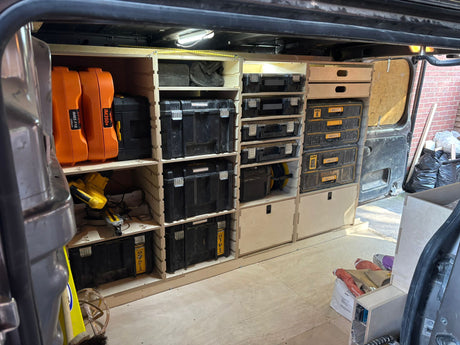Addressing Labor Shortages in the UK Construction Industry
The labor shortage in the UK construction industry is a multifaceted issue that requires a strategic approach across recruitment, training, and retention. As previously discussed, the industry faces an estimated shortfall of 217,000 workers by 2025. This gap poses significant risks to the industry's ability to deliver on housing, infrastructure, and refurbishment projects in a timely and cost-efficient manner. Below, we break down actionable solutions and invite further questions to explore their viability.
1. Expanding Apprenticeships and Vocational Training
- Current State: The construction industry has relied on a steady inflow of foreign labor, particularly from the EU. However, post-Brexit regulations have limited this labor pool. At the same time, younger generations are showing decreasing interest in construction careers, leading to a significant skills gap.
-
Proposed Solution: Expanding apprenticeship schemes to offer more attractive packages, including financial incentives for employers to take on apprentices. These could be in the form of grants or tax relief for each apprentice employed.
- Why This Could Work: Apprenticeships provide on-the-job training, allowing young workers to gain experience while filling labor gaps. Additionally, increasing flexibility in apprenticeship schemes, such as shorter, targeted programs, could attract more candidates.
- Challenges: Questions could arise about the long-term appeal of apprenticeships, especially if wages for entry-level positions remain lower than in other sectors.
2. Retraining the Existing Workforce
- Current State: The CITB notes that many of the workers currently employed in construction are nearing retirement age . Without plans to replace these workers, the industry could face a significant loss of experienced talent.
-
Proposed Solution: Upskilling and reskilling programs targeted at the existing workforce could mitigate this. Offering digital skills training, for example, would allow older workers to transition to roles that utilise new technologies, such as building information modelling (BIM) or advanced project management software.
- Why This Could Work: Retaining experienced workers while integrating technology into construction would allow firms to be more efficient, improving productivity while addressing skills gaps.
- Challenges: Retraining programs could be costly, and there may be resistance from older workers who are less inclined toward technology.
3. Promoting Diversity in Construction
- Current State: The UK construction industry has traditionally had low diversity in its workforce. Women, ethnic minorities, and other underrepresented groups make up a small fraction of the labor force.
-
Proposed Solution: Diversity initiatives could help widen the labor pool. Programs aimed at encouraging underrepresented groups to enter construction could include targeted recruitment campaigns, mentorship programs, and flexible work policies to accommodate different needs.
- Why This Could Work: Expanding the diversity of the workforce would bring in new talent and perspectives, which could enhance innovation and creativity within the industry. More inclusive workplaces could also appeal to a broader range of candidates.
- Challenges: Changing industry perceptions and working conditions to make construction more appealing to underrepresented groups will take time and significant investment in outreach and education.
4. Automation and Technological Innovation
- Current State: Technology adoption in construction has been relatively slow, but the global shift toward digitisation could help alleviate labor shortages. Automated machinery, drones for surveying, and AI-driven project management could fill gaps left by human labor .
-
Proposed Solution: Investing in construction automation could reduce reliance on manual labor and increase overall efficiency. Automated systems can complete tasks like bricklaying, surveying, or excavation faster and with fewer errors.
- Why This Could Work: Automation could allow construction firms to maintain productivity even with a smaller workforce. By focusing on tasks that are repetitive or physically demanding, firms can also improve safety and reduce burnout.
- Challenges: Initial investment in technology can be expensive, and there is likely to be resistance from workers who fear job losses due to automation.
5. International Recruitment and Immigration Policy
- Current State: As mentioned, Brexit has restricted the flow of skilled workers from the EU, exacerbating the skills gap. Pre-Brexit, 17% of the construction workforce was non-UK born . New immigration rules have made it difficult to bring in skilled labor from overseas.
-
Proposed Solution: Reforming immigration policies to allow for more flexible work visas could help bridge the labor gap. This could include creating special visa categories for construction workers or temporary work permits for large projects.
- Why This Could Work: Opening up immigration channels again, even on a limited basis, would allow the UK to meet short-term labor needs while training domestic workers for long-term roles.
- Challenges: Immigration reform is politically sensitive, and it may face resistance from government bodies. Additionally, relying on foreign labor does not address the root causes of domestic labor shortages.
Conclusion: Tackling the Labor Shortage
Each of these strategies offers a potential path forward to addressing labor shortages in the UK construction industry. The success of any given solution will depend on how well it is implemented and how it interacts with other elements of the industry. It is crucial to open a dialogue around these proposed solutions, considering both their advantages and limitations, and exploring other creative ways to address labor shortages.









